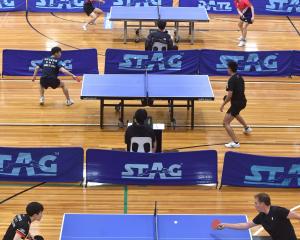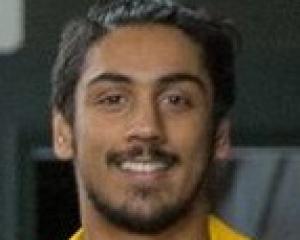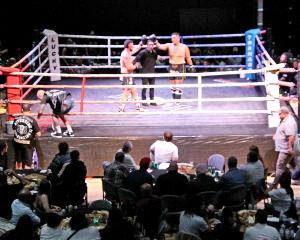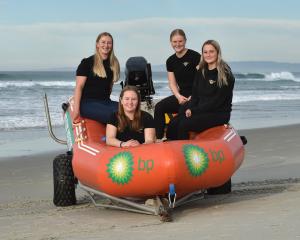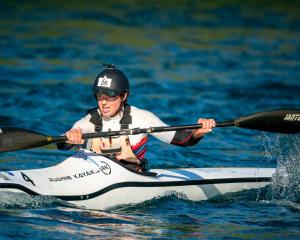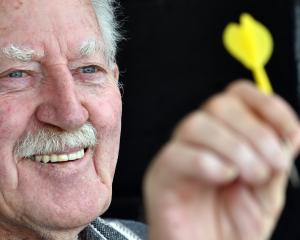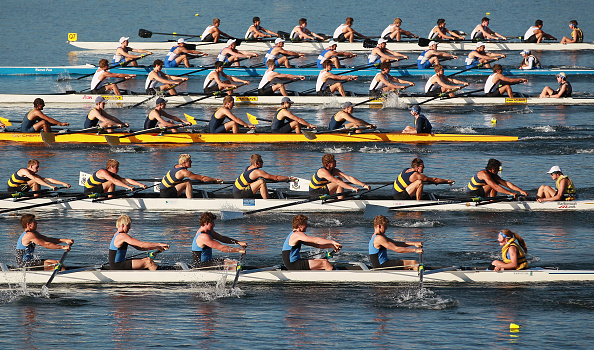
When rowing romantics talk about the magic of the Maadi Cup - the final race of the secondary schools rowing championships - their stories typically centre on the chaotic scenes the event inspires.
Picture this: 2500 high school rowers and thousands more support crew, families and spectators crammed in along the embankment for finals day. Inter-school rivalries, and even inter-island rivalries, are fierce.
The tension reaches fever pitch for the under-18 boys eight final, traditionally positioned as the premier event of the regatta. The embankment becomes a mass of frenzied screaming and chanting, some supporters even advancing into the shallows of the lake willing their boats to victory.
But for Hassall, the long-serving principal of Hamilton Boys’ High School (HBHS), it’s the moment when an anticipated hush falls over the crowd as they await the starting buzzer that leaves the biggest impression.
“The silence is extraordinary, like the whole crowd stops … you can hear a pin drop,” says Hassall, who estimates she will be attending her 25th Maadi Regatta in Twizel this week.
“Then as they come towards the last 500, the screaming starts. I've usually got my eyes closed by that point, because I'm not a good finals watcher.
“But it’s extraordinary, emotional, highly-charged.”
Lately, however, many in the sport are questioning whether it has become too highly-charged.
When it comes to the Maadi Cup, HBHS are considered one of the heavyweights. They have won the iconic pyramid-shaped trophy an impressive 11 times - most recently in 2022.
But the reputation of the school’s much-vaunted rowing programme took a hit last year when it became embroiled in a cheating scandal. A Rowing NZ investigation found the school had committed 17 rule breaches from 2021-2023.
The scandal attracted national headlines and widespread scorn from rivals - but not surprise.
“There’s definitely a feeling that something like this was going to happen. It’s probably been brewing for a while,” says one Auckland high school coach.
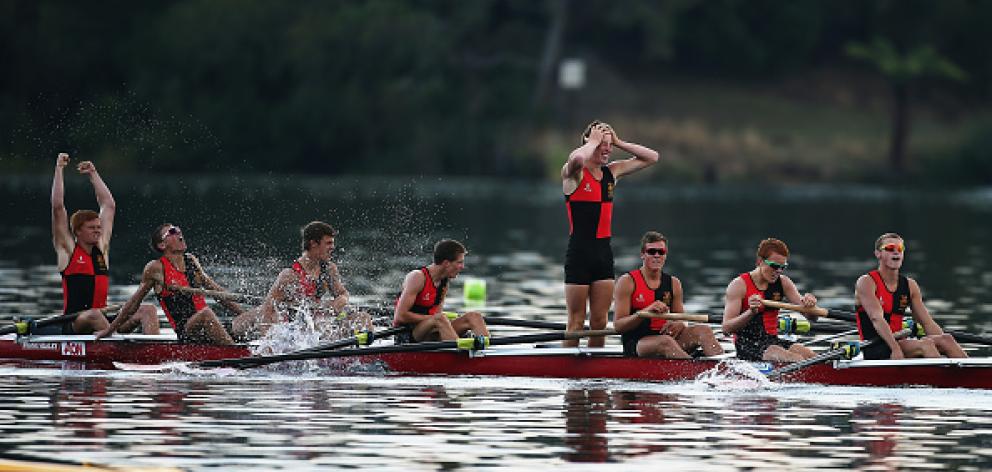
These concerns are not unique to rowing. The coach points out the same issues are rife in schoolboy rugby and cricket, but he describes rowing - a sport in which elitism and prestige are the twin helixes of its DNA - as “its own special basket case”.
“It’s gotten long past the point where something needs to be done about it.”
The photograph
In the end, it was a photograph on Hamilton Boys’ High School’s own website that proved the unravelling of its rowing programme.
In March last year, Rowing NZ received a whistleblower complaint alleging HBHS had repeatedly breached the rules by substituting older rowers in novice races and failing to register those changes.
The allegations, if true, were suggestive of systemic manipulation of the rules over a number of years.
The problem for Rowing NZ was it is difficult to retroactively prove the crew listed on the entry were not the same boys in the boat.
A post on the school website congratulating one of the novice crews on their win at a recent regatta proved the leaping off point for the investigation. One of the boys pictured celebrating on the podium was not in the crew list.
Rowing NZ then set about getting its hands on as much photographic evidence as it could from the last three seasons, cross referencing crew lists with event photos, pictures on social media and the school newsletter.
In all, the governing body tallied 17 rules breaches across 10 events involving two rowers.
The school was stripped of titles and medals won at two Maadi regattas and two North Island Secondary School Championships between 2021 and 2023.
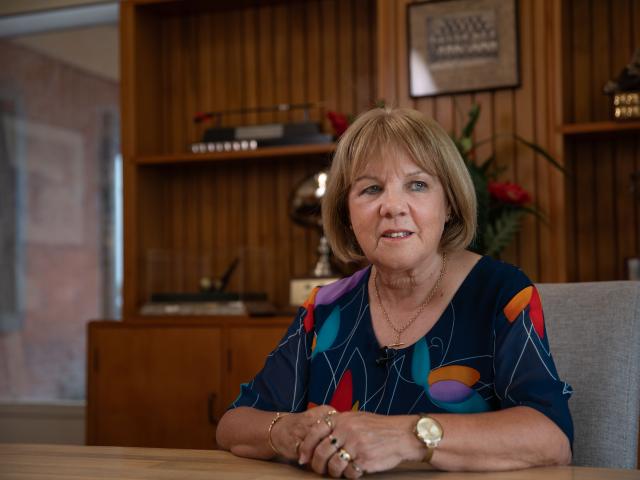
“There was no intention to defraud,” she tells RNZ.
“And I’ll say that over and over, because it’s the absolute truth.
“Really what I think needs to be understood by the community, is as soon as we found out about it we recognised our breach and we apologised to Rowing NZ straight away and they chose not to deal with it with us, they chose to take it further and get lawyers involved and what not.”
Hassall, who will retire at the end of the term, declined to give her views on the investigation. But there remains a strong sense among HBHS supporters that Rowing NZ was heavy-handed in its approach.
Others, though, think the governing body was too soft on the school and that the breaches should have spelt “game over” for HBHS’s involvement in this week’s Maadi Regatta.
Rowing NZ’s Mark Weatherall led the investigation and says it was robust.
“Look, I guess there’s different views of what happened and how it happened and why it happened, but the reality is that we found the [allegations] to be valid and we dealt with that school appropriately,” Weatherall says.
“The process we went through has sent a clear message to the schools that that behaviour can not be tolerated, and that [we] will take that seriously and act on it - the integrity of the sport is the utmost.”
In the fallout from the scandal, the entire schools rowing environment has come under the microscope, revealing deeper, more fundamental concerns about the overheated nature of the sport.
“Going through that process there were other concerns from other schools that were raised, not necessary about [rule breaches], but other behaviours that suggest maybe, on a scale, things have gone a bit too far,” says Weatherall.
“I do think there are some schools that probably are taking it to the nth degree, which is creating some real problems.”
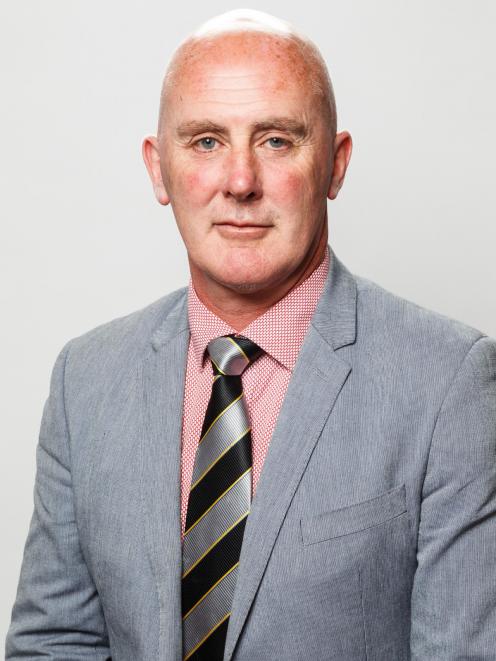
He’s been a particularly outspoken critic of coaches who encourage students to repeat year 13 for another crack at a title. In 2022, O’Connor was among a handful of Christchurch coaches who wrote to Rowing NZ, School Sport and Sport NZ to express their concerns about the controversial practice.
“This competition we are training for in March is called the New Zealand secondary schools. And in New Zealand, secondary school goes from year nine to year 13. And that's it. Yes, there is still an age restriction and the kids have to be under-18, so they are not breaking any rules,” says O’Connor.
“The issue I have with that is these kids have had an extra year of training. And in an endurance sport like rowing, that's a huge advantage if you've done five years, rather than four years.”
While critics of the practice claim there are “no valid educational reasons” for students repeating year 13, others disagree.
Ashburton College coach Justin Wall’s daughter Veronica, who is now a member of the Rowing NZ high performance team, competed at the Maadi Regatta as a year 14 student before taking up a scholarship at the prestigious Yale University.
Wall says with the academic year in the US starting in September, some rowers return to school to continue their study before they take up college scholarships.
Poaching is another source of tension among school rowing programmes. O’Connor says the practice of recruiting talented students from other schools was “out of hand” when he arrived from Ireland two decades ago, but has been curtailed more recently with the introduction of School Sport NZ’s eligibility regulations.
The regulations place limits on how many “new to school” students schools can field in their premier sports teams. For rowing, that means schools can have one “new to school” crew member in a four, but up to three in an eight.
“So the maths doesn’t really stack up there,” says O’Connor, a maths teacher.
But he has a more fundamental problem with it than dodgy arithmetic.
“Isn’t that terrible, that you have to have a quota in place to stop this from happening? I just don’t think it’s right, schools will kind of package it up as ‘it’s good for the kids, we’re bringing these kids from disadvantaged schools to give them a good education’.
“To me, you’re using those kids as currency then when you dress them up in your uniform and you win and it looks good for the school.”
The thing about rowing
So the story goes, the Maadi Cup’s origins lie in bonds forged in Egypt during the Second World War.
In 1939, the New Zealand Expeditionary Force established a base at Maadi, a suburb of Cairo, and during their deployment competed in several regattas against the local rowing club on the Nile.
As a token of friendship, Dr Youssef Baghat of the Cairo Rowing Club presented the Kiwis with a cup in 1942. The trophy was then gifted to Rowing NZ to be used to foster inter-school competition between schoolboy eight crews.
It was first contested in 1947, with Auckland’s Mt Albert Grammar crowned the inaugural winner ahead of three other schools.
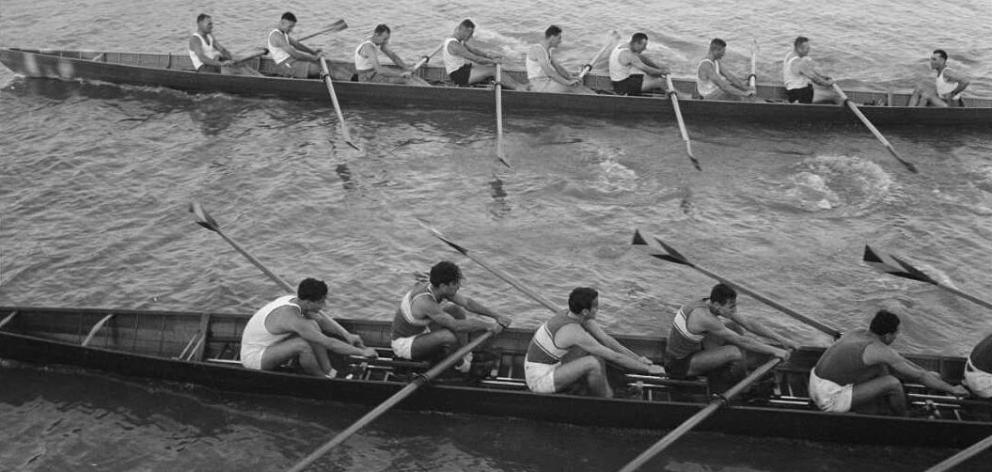
But those rugged, masculine origins remain firmly entrenched, and the Maadi Cup still carries top billing.
“It carries that sense of history, it carries that sense of people sacrificing themselves,” says HBHS's Susan Hassall.
“The whole concept of the Maadi is symbolic of the commitment that the rowers have made through years of training. The Maadi Cup itself is the pinnacle of ambition at secondary school rowing level.”
It’s not just the pinnacle of ambition for the rowers.
The Maadi Cup has become a status symbol for schools as well - a powerful marketing tool to attract the best and brightest talent to their campus who will then be charged with maintaining that legacy.
Hassall believes some schools take their obsession with the Maadi Cup too far, but she does not consider HBHS to be in that category.
“There is a level of competitiveness in sport in terms of school reputations, which I don't think is always healthy,” she says.
“Rowing is for some schools, a badge of honour. If you win the Maadi Cup, then you're seen as being a better school. It's not something we believe in.”
It’s not healthy for the sport either.
The overt focus on the event has created retention problems for the sport. Around 75 percent of Rowing NZ’s membership are high school rowers - indicating a massive drop-off once athletes finish school.
“Because a lot of people look at the Maadi Cup as the pinnacle, a lot of kids will quit after school and not go on. They think ‘what else is there? I’ve won a national championship,” explains O’Connor.
That’s a big problem for Rowing NZ when they only have a limited pool of people in the sport to begin with.
One official describes the high school rowing programmes as a “self-selecting group” - it’s only the students whose parents can afford the fees that get involved in the first place.
Many of the private schools and bigger public schools’ rowing set-ups mirror high performance programmes, with large coaching staffs, and professionalised training structures.
One coach puts the average cost of these programmes at around $4000-$5000 a season, but says when you layer in uniforms, out of town training camps, the cost of attending regattas, the numbers can easily balloon out to $10,000.
When parents invest that much into a sport, it is only natural that they become deeply involved, which can add another source of pressure.
O’Connor says he is constantly pushing the message to parents to rein in their expectations around the Maadi Cup.
“Certainly our school held it in high esteem and I found that others did as well, and it was sort of the be-all and end-all, which to me, was the first warning sign that maybe we shouldn’t be putting so much pressure on the kids to perform and it seemed to be all about that one race.
“You’ll hear ‘how’s the eight going?’ and I’ll say ‘well we have six eights - which one are you talking about’?
“I personally just try to take it down a notch. I find I’m always fighting that battle - let’s not build it up to something it’s not. It’s not life and death.”
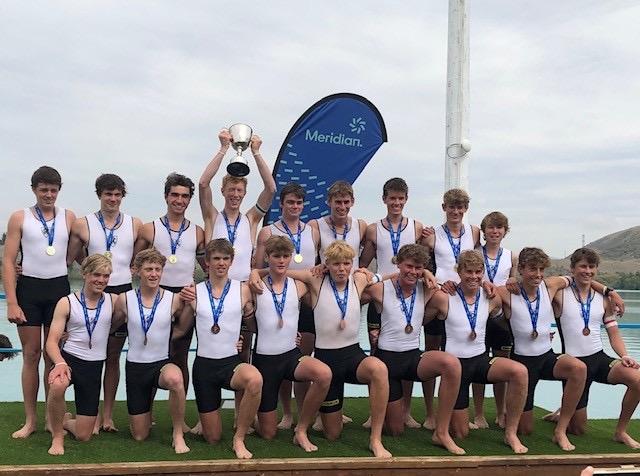 Photo: Christ's College
Finding perspective in a hospital bed
Photo: Christ's College
Finding perspective in a hospital bed

O’Connor doesn’t remember anything of his final at the 2002 rowing world championships.
A former Irish international O’Connor and partner Gearoid Towey dominated the men’s lightweight pair over a two-year stretch in the early 2000s.
After taking out the 2001 world title and setting the pace over the start of the 2002 season, most expected the pair would add another world championship crown in Spain that year.
But few were aware that earlier that season O’Connor had been told he needed to quit the sport by his long-time mentor, Thor Nilsen. The two-time Olympian had been struggling with “family stuff, relationship stuff, and some of the political stuff that was going as well”.
“I got quite stressed, and alongside that, I got very sick,” says O’Connor.
But, at the time, he could not recognise the damage that pressure he was putting himself under was doing. Come the world championships, O’Connor says he was a shell of himself.
What O’Connor now knows is he was suffering from a form of overtraining syndrome, leaving him chronically fatigued.
The Irish pair came last in the final - a race O’Connor says to this day he cannot remember. Following the final a “very sick” O’Connor was carted off to the medical tent.
He awoke to an IV in his arm, and the sight of a very upset Nilsen, who delivered a harsh ultimatum. The Norwegian great, who passed away late last year, told O’Connor that if he wanted to row again, Nilsen would not coach him. But he offered the athlete another option: “He said, I’d like you to come coach the national team with me,” O’Connor recalls.
“I stopped right there and then on that hospital bed in Seville in 2002. That was the end of my rowing career.”
He’s never really thought of it until now, he says, but O’Connor’s experiences as an athlete have shaped his approach to coaching.
“I ended my rowing career quite prematurely. I mean, I was 32, but I intended to keep going for another Olympic cycle. It was only when I removed myself from that situation, and health wise got better, I realised that all these external pressures … really affected me.
“Literally a week after I stopped rowing, I started coaching full time internationally, which was quite fortuitous. But immediately I realised that we need to do this for the right reasons, both in terms of success on the water, but also, more importantly, for the health of the athletes.
“That really cemented the why I do this job. Because hell, there's nothing more important than your life and well being.”
A couple of years into coaching, O’Connor took up an offer to move to the other side of the world to return to teaching, as well as head up the Christ’s College rowing programme.
It wasn’t long after he landed at the Hogwarts-like grounds of the historic boys’ school in the heart of Christchurch that he realised the sport was taken a lot more seriously down these parts.
“It was all about ‘we have to win the Maadi Cup, that’s what we expect’,” he recalls.
“I said, well actually what I expect is some good, honest kids to turn up and do some hard training and we’ll see where we go from there.”
It’s not about the boat
The sun has not long peered out above the Ben Ohau Range that frames Lake Ruataniwha, when the first wave arrives.
The stillness of the early morning air is broken by the sound of the low buzz of bike chains as a group of Christ’s College rowers freewheel into the boat park of the Meridian Rowing Centre.
They set their bikes down in a haphazard pile, which will fan out over the morning as more waves of students arrive, and quickly set about organising themselves for the session.
Jackets and hoodies are discarded for their rowing kit, coxswains don their headsets, oars are gathered.
Then, in a manoeuvre requiring maximum coordination, the boys hoist the skiff from the racks, sling it onto their shoulders and trek down to the pontoon to launch the boat.
This has been the routine for the past five mornings, with the 55 boys involved in the programme spending the final week of their summer break in camp in Twizel.
To O’Connor, the camp is as much about what they do off the water, as on it.
The philosophy is simple: they encourage accountability, teamwork and personal responsibility.
The students are responsible for getting themselves to and from the lake each day, biking the 4km journey from their accommodation in the centre of Twizel to the lake on the edge of the township. They’re also expected to pitch in with cooking, cleaning and laundry.
“One of the big things we do is, yeah, we try to teach them how to move a boat quickly. But I think really what we're trying to do is help these young men just grow up into good citizens,” he says.
“So we teach them things like how to ride a bike single file, how to wash their dishes, how to use a washing machine, how to use a [vacuum cleaner] - that's always a big one for a lot of the day boys - they sort of stare at it with a lost look on their face - so yeah, those sort of life skills are imprinted on them quite early.”
The morning’s training involves a series of practice starts in preparation for the South Island Championships, which are being held at Lake Ruataniwha that weekend. For the younger crop of boys in the group, they are yet to have their first taste of racing after strong winds forced the cancellation of much of the summer regatta programme in Twizel - much to the lament of the clubs.
Down at the startline, O’Connor watches on bemused while a fellow coach, Nathan Luff, patiently communicates the starting sequence to the crews on the water.
Just getting to the startline can be stressful for young rowers. The crews must perform the delicate dance of getting themselves lined up in the lane, at times testing the patience of the starter, officials and fellow competitors.
The purpose of this exercise is to eliminate some of that angst.
“People lose sight of why we do this, why we started doing it as kids, and why we should continue to do it, and winning becomes the goal,” O’Connor says, as the crews disappear from view up the course.
“To me, winning has never ever been the goal - that never should be the goal. And ironically enough, when you start fixating on winning, you tend not to win. When you fixate on doing things right - both physiologically training wise, technique wise, but also ethically and morally as well, you get much better athletes.”
If that sounds like an anti-competitive attitude then the thing you need to know about O’Connor is he has not only reached the top of the sport as an athlete, but also as a coach.
In 2019, he was asked to take over the New Zealand men’s eight programme as the team attempted to qualify for the Tokyo Olympic Games. That one-year assignment became two when the Covid-19 pandemic forced the delay of the Games.
The New Zealand men’s eight, which qualified for Tokyo via the last chance regatta only months before the Games, went on to become Olympic champions after torching the field in a brutal display of power.
International job offers followed for O’Connor, but he elected to return to Christ's College, where he teaches maths and physics.
“One of the reasons I'm not continuing on in my international coaching career is because this stuff is, in so many ways, better. I love the guys I coached over the few years with Rowing New Zealand, but this is where you get to see changes day by day, and you just feel like you might have had a little part to play in these kids becoming something special.”
On a slow boat to change
From his “office” overlooking the Lake Ruataniwha rowing course, Justin Wall has a better position than most to sense the winds of change.
The veteran coach, administrator, technical official and rowing dad can be found at most regattas in the starting tower, sending crews off down the course to a fate unknown.
He’s come to learn the unique weather patterns of the venue, and in particular, which winds will cause a short delay, and when it’s time to pack up for the day.
He’s also got a strong sense of the barometer on the ground.
“The conversation is shifting,” Wall observes.
“There’s a number of concerns that have been around for a while now. I think more recently there has come a shift and we as a sport are looking for solutions. There’s recognition there that we have to adapt and change.”
Last year Wall, a long-time coach of Ashburton College, stood before the New Zealand Secondary Schools’ Rowing Association AGM, to support a proposal to significantly shake-up high school rowing.
The proposal, put forward by another South Island rowing stalwart, Rowing NZ president John O’Connor (no relation to Tony), recommended changing the age classification for regattas to school year level (year 10,11,12, 13) as opposed to their age (U15, U16, U17, U18).
The thinking behind it is that rowing is a late development sport, with most participants not picking up an oar until they reach high school.
Currently the age-based system favours those with “lucky birthdays”, with some year 11 students with three years of training under their belts still eligible to race in the Under-15 division, pitting them against rowers completely new to the sport.
The gulf in experience and training age can lead to significant margins in competition, which, officials point out, can lead young athletes to decide they’re not cut out for the sport.
It was also noted in the AGM minutes that the move to a year-based system would bring an end to the controversial practice of “year 14” athletes.
“Limiting the Maadi Regatta to years 11, 12, and 13 will stop the inclusion of age eligible students returning to school only to compete at Maadi.”
Wall says the reception for the proposal at last year’s AGM, held on the eve of the Maadi Regatta, was fairly muted (“we didn’t get a standing ovation, but we didn’t get booed out of the room either”). But in conversations at Karapiro over the course of the week most people he spoke to agreed change was needed.
“I had plenty of opportunity to talk to coaches and everybody had an opinion, and frequently it was not the same opinion, about where we should be going - which I think is healthy,” he says.
“If you've got a sport where everyone says ‘nah we're just going to carry on doing this’, then you've got to question the integrity of the sport.”
Even Wall and John O’Connor aren’t aligned in every point of the proposal - in particular the 'year 14' issue, and a recommendation that the Maadi Regatta would only be open to year 11 students and above. Instead, the focus for the younger athletes should be skill development, and less intensive competition.
But Wall says he wouldn’t like to see the younger students excluded from the Maadi Regatta.
“I think competition is great. We need young people to be exposed to competition, to be exposed to winning. And also to be exposed to participating,” he says.
“That is one of the tricky things - will we be taking away a rich experience for them?”
The upshot of the discussion at the 2023 AGM was a motion was passed for a working group to be formed to properly tease out the pros and cons of the proposed changes.
But thus far, no further work has been done on the proposal.
Rowing NZ’s Mark Weatherall says the national body is hemmed in by the constitution of the national schools rowing association, which dictates that rule changes can only be made every four years.
He adds a working group will be established this winter, with the panel looking to put forward rule changes to be voted on at the 2025 AGM.
“There are different ideas and we need to explore those before we put forward anything for a vote,” he says.
“Ultimately, it will come back to the schools, because they own the association. As such, our role is to provide leadership and strong rationale for change. But the reality is that they will decide.”
Correct your course
Strong winds have turned the topaz waters of Lake Ruataniwha into a white-capped monster, forcing the abandonment of Saturday’s race programme at the South Island Championships in late January.
But Sunday dawns with a different kind of energy. After a disrupted summer regatta schedule, the conditions have finally allowed a full day of racing bringing a buzz to the park.
At the start line, 2km up the lake from the boat park, the women’s novice double sculls are first up on the schedule. They manoeuvre their way, trying to line themselves up with the starting gates in an awkward slow dance.
Once they are all in alignment, there is no messing around from Justin Wall in the starting tower. The buzzer sounds and they burst off the line with a series of frenzied strokes.
The umpire boats quickly fall in behind fanning out across the lake so officials can keep an eye on each of the lanes.
Soon the rhythmic swishing sound of the oars slicing through the water is replaced by a soundtrack of duelling megaphones, as officials bark instructions at the young crews.
“Correct your course,” they repeat almost in unison.
The chorus echoes across the lake long after the boats have disappeared from sight.
Credits
Reporter
Dana Johannsen
Executive Editor
John Hartevelt
Visuals
Cole Eastham-Farrelly
Design
RNZ

